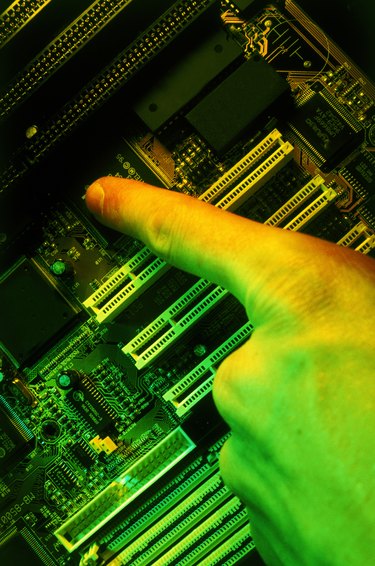
While it's possible and, in many cases, likely that you will never actively work with your computer's Basic Input/Output System, it's one of the most important parts of your computer. The BIOS controls how your computer starts up, makes sure that it's working properly and serves as a gatekeeper for its various parts. While its default settings are usually more than adequate for most business purposes, most BIOSes are also configurable.
Detecting Components and POST
Video of the Day
When you first turn on your computer, the BIOS looks at all of the devices that are connected to your computer. It then runs a series of tests called a Power-On Self Test on the computer and on connected devices to make sure that they are working properly. If they aren't, it gives you an error code to let you know which component is malfunctioning.
Video of the Day
Booting Up
Assuming that everything is working correctly on your computer, the next step that the BIOS takes is to load the operating system into memory. It looks at its settings to determine which drive is designated as the "boot" drive and goes to a special section of that drive to find a small piece of code, sometimes called a Master Boot Record, to load into memory. The code tells the computer how to load the operating system; once it's executed from memory, the computer takes over from the BIOS and starts loading the OS and booting up.
Gatekeeping
Once the computer loads the operating system, the BIOS doesn't fade into the background. It's still there providing low-level drivers and information to help the computer's various parts work together. When your operating system needs to talk to the hard drive, for instance, it doesn't have to know how or where your hard drive is attached. It just sends the message to the BIOS, which takes care of passing it along to the correct drive on the correct socket.
Customizing Your Computer
When you buy a computer, the BIOS frequently comes pre-configured to suit your needs. However, you can change the BIOS settings as well. If you wish to squeeze as much performance out of your computer as possible, you can change configuration options like the CPU clock speed and voltage to force it to run faster. In a business setting, you might choose to prevent the computer from booting from anything other than the hard drive, then enter a password to prevent the setting from being changed. This can stop employees or third parties from using an optical disk or USB drive to boot an alternate operating system, bypass your security, and steal data.